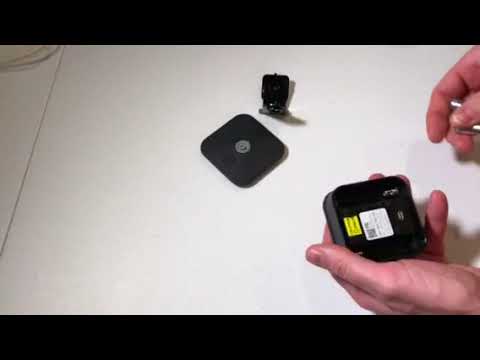What Batteries Does Blink Camera Use – Complete Guide!
Blink cameras use two non-rechargeable 1.5V AA lithium batteries, preferably Energizer Ultimate Lithium (L91). These batteries offer long-lasting performance, making them ideal for outdoor and high-traffic areas where consistent power is essential.
Blink cameras are a popular choice for home security due to their wireless design, compact size, and ease of installation. However, one of the most frequently asked questions by new and existing users is: “What batteries does Blink camera use?” This article answers that in detail, offering a complete guide on battery compatibility, life expectancy, replacement options, and power tips to help you keep your Blink camera running smoothly.
Types of Blink Cameras and Their Battery Requirements
Blink offers several camera models, each with slightly different battery needs. Most Blink cameras are designed to be wire-free and run on battery power.
Here’s a breakdown of Blink camera models and the type of batteries they use:
| Blink Camera Model | Battery Type | Quantity Required |
| Blink Outdoor | AA 1.5V Lithium (non-rechargeable) | 2 |
| Blink Indoor (gen 2) | AA 1.5V Lithium (non-rechargeable) | 2 |
| Blink XT and XT2 | AA 1.5V Lithium (non-rechargeable) | 2 |
| Blink Video Doorbell | AA 1.5V Lithium (non-rechargeable) | 2 |
| Blink Mini | N/A (USB-powered only) | 0 |
| Blink Floodlight Cam | AA 1.5V Lithium + USB (hybrid) | 4 (optional backup) |
What Type of Batteries Are Recommended?

Primary Recommendation: Energizer Ultimate Lithium AA (L91)
Blink officially recommends using non-rechargeable 1.5V AA lithium batteries, such as the Energizer Ultimate Lithium (L91). These are known for their long-lasting performance and wide operating temperature range.
Advantages:
- Works in extreme temperatures (-40°F to 140°F)
- Lasts up to 2 years under standard use
- Leak-proof and safe for sensitive electronics
- Low self-discharge rate
Batteries You Should Avoid
Not all batteries are created equal. Using the wrong type can damage your camera or significantly shorten its runtime.
Avoid:
- Alkaline AA batteries: These drain quickly and don’t handle outdoor conditions well.
- Rechargeable NiMH batteries (1.2V): Their lower voltage causes instability and may result in connectivity loss.
- Off-brand lithiums: Many inexpensive lithiums don’t deliver consistent power or can swell.
How Long Do Blink Camera Batteries Last?
Battery life depends on various factors, including usage, settings, temperature, and Wi-Fi strength. On average:
| Use Case | Estimated Battery Life |
| Standard usage (default settings) | Up to 2 years |
| Frequent motion detection & recording | 6–12 months |
| Cold climate + high traffic | 3–6 months |
Tip: Monitor battery level from the Blink App > Camera Settings > Battery Status.
Blink Camera Power Usage Factors
To maximize battery life, consider the following:
- Motion Detection Sensitivity: Higher sensitivity = more recordings = faster battery drain.
- Video Clip Length: Longer clips consume more power.
- Live View Usage: Frequent use drains batteries quickly.
- Night Vision: Infrared LEDs use more energy.
- Wi-Fi Strength: Weak signal leads to higher power consumption during reconnections.
Can You Use Rechargeable Batteries?
Technically, yes. But Blink doesn’t recommend it.
Rechargeable NiMH batteries are typically 1.2V, which can cause power errors and shorten camera life. Some advanced users opt for 1.5V lithium rechargeable batteries, such as:
- Energizer Recharge Universal (1.5V)
- Kentli Lithium Polymer Rechargeable AA
Caution: Only use if you’re experienced with rechargeable systems and regularly monitor battery status.
Alternative Power Sources for Blink Cameras
If you want to avoid battery replacements altogether, consider these options:
1. Blink USB Power Adapter
- Compatible with Blink Indoor and Outdoor.
- Requires use of a power cable and weatherproof adapter for outdoor setups.
2. Solar Panels
- Several third-party companies make Blink-compatible solar panels.
- Ideal for outdoor, high-traffic areas.
3. Battery Expansion Packs
- Add-on packs hold 4 or more batteries to extend life.
- Must be compatible with Blink’s internal circuitry.
Where to Buy Compatible Batteries
Here are reliable sources for genuine Blink-compatible batteries:
| Retailer | Product | Notes |
| Amazon | Energizer Ultimate Lithium | Bulk packs available |
| Walmart | Energizer Lithium AA | In-store and online |
| Best Buy | Blink Battery Kit | Includes camera tools |
| Blink Official Store | Battery Refill Bundles | Authentic and guaranteed |
Expert Tips for Extending Battery Life
- Position cameras strategically to avoid unnecessary triggers.
- Use Activity Zones to ignore motion in certain areas.
- Enable clip auto-stop to end recordings early if no motion is detected.
- Set longer re-trigger time between recordings.
- Turn off audio recording if not needed.
How to Replace Blink Camera Batteries (Step-by-Step)

Here’s how to change batteries in most Blink camera models:
Tools Needed:
- Small screwdriver (flathead)
- Fresh AA lithium batteries
Steps:
- Disarm the camera from the Blink app.
- Remove the back cover by pressing or unscrewing the latch.
- Take out the old batteries.
- Insert new AA lithium batteries in correct polarity.
- Reattach the cover and test via the app.
🔧 Pro Tip: Wipe battery contacts with a dry cloth before inserting new ones.
Troubleshooting Battery Issues
Common Battery-Related Errors:
- Camera offline
- Low battery alert even with new batteries
- Motion detection not working
Solutions:
- Reinsert batteries firmly and check contact alignment.
- Perform a power cycle: remove batteries, wait 30 seconds, and reinsert.
- Move closer to router or add a Blink Sync Module to improve connectivity.
FAQs:
1. Can I use regular AA batteries in my Blink camera?
No, regular AA alkaline batteries are not recommended. They drain quickly and may leak, potentially damaging your Blink camera. Always use non-rechargeable 1.5V lithium batteries for safety and long-lasting performance.
2. Why does my Blink camera show low battery even after replacing them?
This issue often arises from using incorrect battery types, such as alkaline or 1.2V rechargeables. Ensure you’re using fresh 1.5V lithium batteries and that they’re properly seated in the battery compartment.
3. How do extreme temperatures affect Blink camera batteries?
Lithium batteries perform well in extreme conditions, but cold weather can still reduce efficiency. For best results in freezing temperatures, use Energizer Ultimate Lithium batteries, which are rated for -40°F to 140°F environments.
4. Are there any solar charging options for Blink cameras?
Yes, third-party solar panel kits compatible with Blink Outdoor cameras are available. These solar solutions help maintain battery levels in areas with high motion activity, reducing the need for manual battery changes.
5. Is there a way to monitor Blink camera battery health remotely?
Yes. Open the Blink app, go to your device settings, and check “Battery Status.” It shows a real-time update so you can monitor power levels and know when replacements are necessary.
Conclusion
Choosing the right batteries is essential for keeping your Blink camera reliable and fully functional. Stick with 1.5V non-rechargeable lithium AA batteries—especially Energizer Ultimate Lithium—for the best performance in any weather. Avoid alkaline or 1.2V rechargeables, which can cause frequent disconnections and short battery life. Smart battery usage combined with app monitoring ensures consistent security coverage. Whether you’re protecting your home entrance or backyard, the right battery choice can extend your camera’s service life and reduce maintenance hassles.







